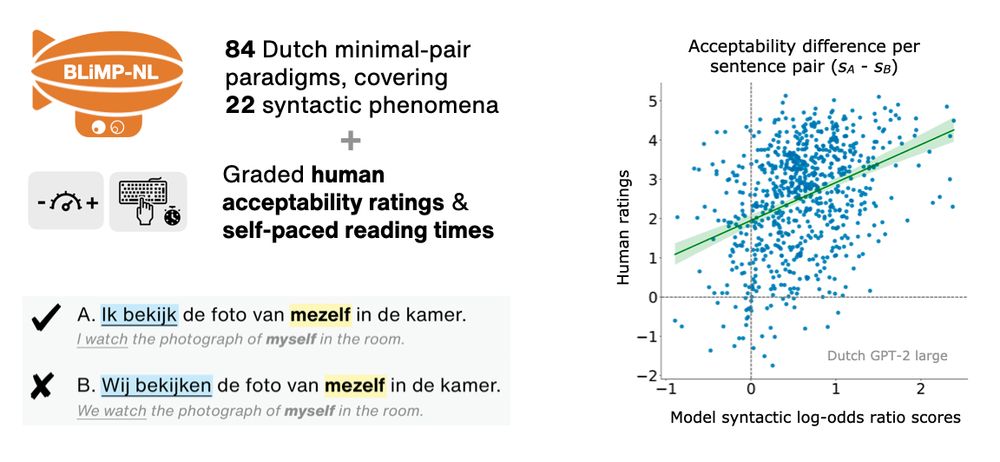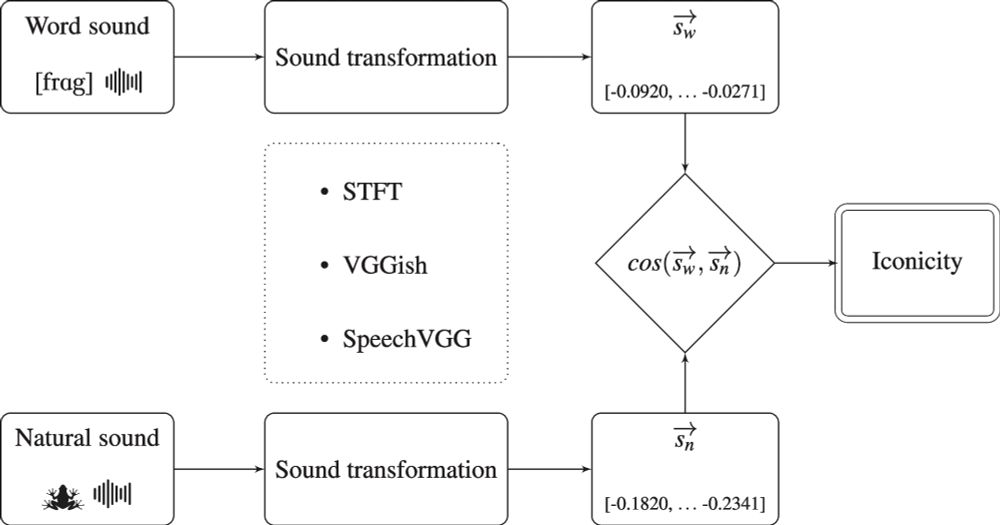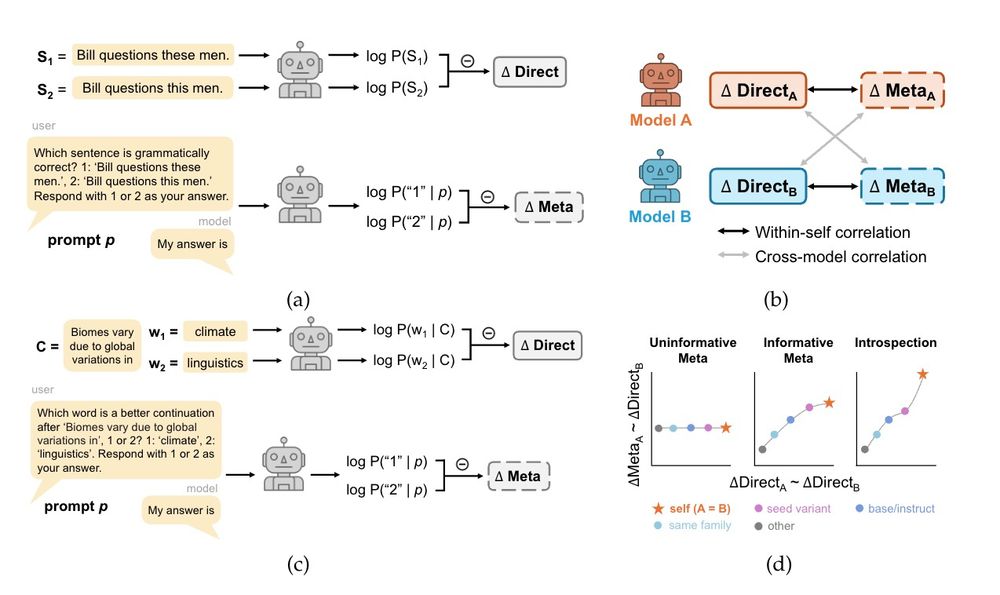w/ @fepdelia.bsky.social, @hopekean.bsky.social, @lampinen.bsky.social, and @evfedorenko.bsky.social
Link: www.pnas.org/doi/10.1073/... (1/6)
w/ @fepdelia.bsky.social, @hopekean.bsky.social, @lampinen.bsky.social, and @evfedorenko.bsky.social
Link: www.pnas.org/doi/10.1073/... (1/6)
w/ @fepdelia.bsky.social, @hopekean.bsky.social, @lampinen.bsky.social, and @evfedorenko.bsky.social
Link: www.pnas.org/doi/10.1073/... (1/6)
If you are interested in the intersection of linguistics, cognitive science, & AI, I encourage you to apply!
PhD link: rtmccoy.com/prospective_...
Postdoc link: rtmccoy.com/prospective_...

If you are interested in the intersection of linguistics, cognitive science, & AI, I encourage you to apply!
PhD link: rtmccoy.com/prospective_...
Postdoc link: rtmccoy.com/prospective_...
Adding human-like memory limitations to transformers improves language learning, but impairs reading time prediction
This supports ideas from cognitive science but complicates the link between architecture and behavioural prediction
arxiv.org/abs/2508.05803

Adding human-like memory limitations to transformers improves language learning, but impairs reading time prediction
This supports ideas from cognitive science but complicates the link between architecture and behavioural prediction
arxiv.org/abs/2508.05803
New Preprint (link: tinyurl.com/LangLOT) with @alexanderfung.bsky.social, Paris Jaggers, Jason Chen, Josh Rule, Yael Benn, @joshtenenbaum.bsky.social, @spiantado.bsky.social, Rosemary Varley, @evfedorenko.bsky.social
1/8

New Preprint (link: tinyurl.com/LangLOT) with @alexanderfung.bsky.social, Paris Jaggers, Jason Chen, Josh Rule, Yael Benn, @joshtenenbaum.bsky.social, @spiantado.bsky.social, Rosemary Varley, @evfedorenko.bsky.social
1/8
I will present our new BLiMP-NL dataset for evaluating language models on Dutch syntactic minimal pairs and human acceptability judgments ⬇️
🗓️ Tuesday, July 29th, 16:00-17:30, Hall X4 / X5 (Austria Center Vienna)

I will present our new BLiMP-NL dataset for evaluating language models on Dutch syntactic minimal pairs and human acceptability judgments ⬇️
🗓️ Tuesday, July 29th, 16:00-17:30, Hall X4 / X5 (Austria Center Vienna)
It's geared toward psychologists & linguists and covers extracting embeddings, predictability measures, comparing models across languages & modalities (vision). see examples 🧵

It's geared toward psychologists & linguists and covers extracting embeddings, predictability measures, comparing models across languages & modalities (vision). see examples 🧵
Read more: link.springer.com/article/10.3...
@andreadevarda.bsky.social

Read more: link.springer.com/article/10.3...
@andreadevarda.bsky.social
Generate a…
- Python program that passes a test suite.
- PDDL plan that satisfies a goal.
- CoT trajectory that yields a positive reward.
The list goes on…
How can we efficiently satisfy these? 🧵👇
Generate a…
- Python program that passes a test suite.
- PDDL plan that satisfies a goal.
- CoT trajectory that yields a positive reward.
The list goes on…
How can we efficiently satisfy these? 🧵👇
with: @hsmall.bsky.social @moshepoliak.bsky.social @gretatuckute.bsky.social @benlipkin.bsky.social @awolna.bsky.social @aniladmello.bsky.social and @evfedorenko.bsky.social
www.biorxiv.org/content/10.1...
1/n 🧵

with: @hsmall.bsky.social @moshepoliak.bsky.social @gretatuckute.bsky.social @benlipkin.bsky.social @awolna.bsky.social @aniladmello.bsky.social and @evfedorenko.bsky.social
www.biorxiv.org/content/10.1...
1/n 🧵
Some of these words are consistently remembered better than others. Why is that?
In our paper, just published in J. Exp. Psychol., we provide a simple Bayesian account and show that it explains >80% of variance in word memorability: tinyurl.com/yf3md5aj
Some of these words are consistently remembered better than others. Why is that?
In our paper, just published in J. Exp. Psychol., we provide a simple Bayesian account and show that it explains >80% of variance in word memorability: tinyurl.com/yf3md5aj
Using a large fMRI dataset (n=772) we comprehensively search for language-selective regions across the brain. w/
Aaron Wright, @benlipkin.bsky.social, and @evfedorenko.bsky.social
Link to the preprint: biorxiv.org/content/10.1...
Thread below!👇🧵

Using a large fMRI dataset (n=772) we comprehensively search for language-selective regions across the brain. w/
Aaron Wright, @benlipkin.bsky.social, and @evfedorenko.bsky.social
Link to the preprint: biorxiv.org/content/10.1...
Thread below!👇🧵

doi.org/10.1111/cogs...

doi.org/10.1111/cogs...
Here is the MIT news story:
news.mit.edu/2025/esperan...

Here is the MIT news story:
news.mit.edu/2025/esperan...
Across models and domains, we did not find evidence that LLMs have privileged access to their own predictions. 🧵(1/8)

Across models and domains, we did not find evidence that LLMs have privileged access to their own predictions. 🧵(1/8)
Brain encoding in 21 languages!
www.biorxiv.org/content/10.1...
w/ Saima Malik-Moraleda, @gretatuckute.bsky.social , and @evfedorenko.bsky.social (1/)

Brain encoding in 21 languages!
www.biorxiv.org/content/10.1...
w/ Saima Malik-Moraleda, @gretatuckute.bsky.social , and @evfedorenko.bsky.social (1/)


